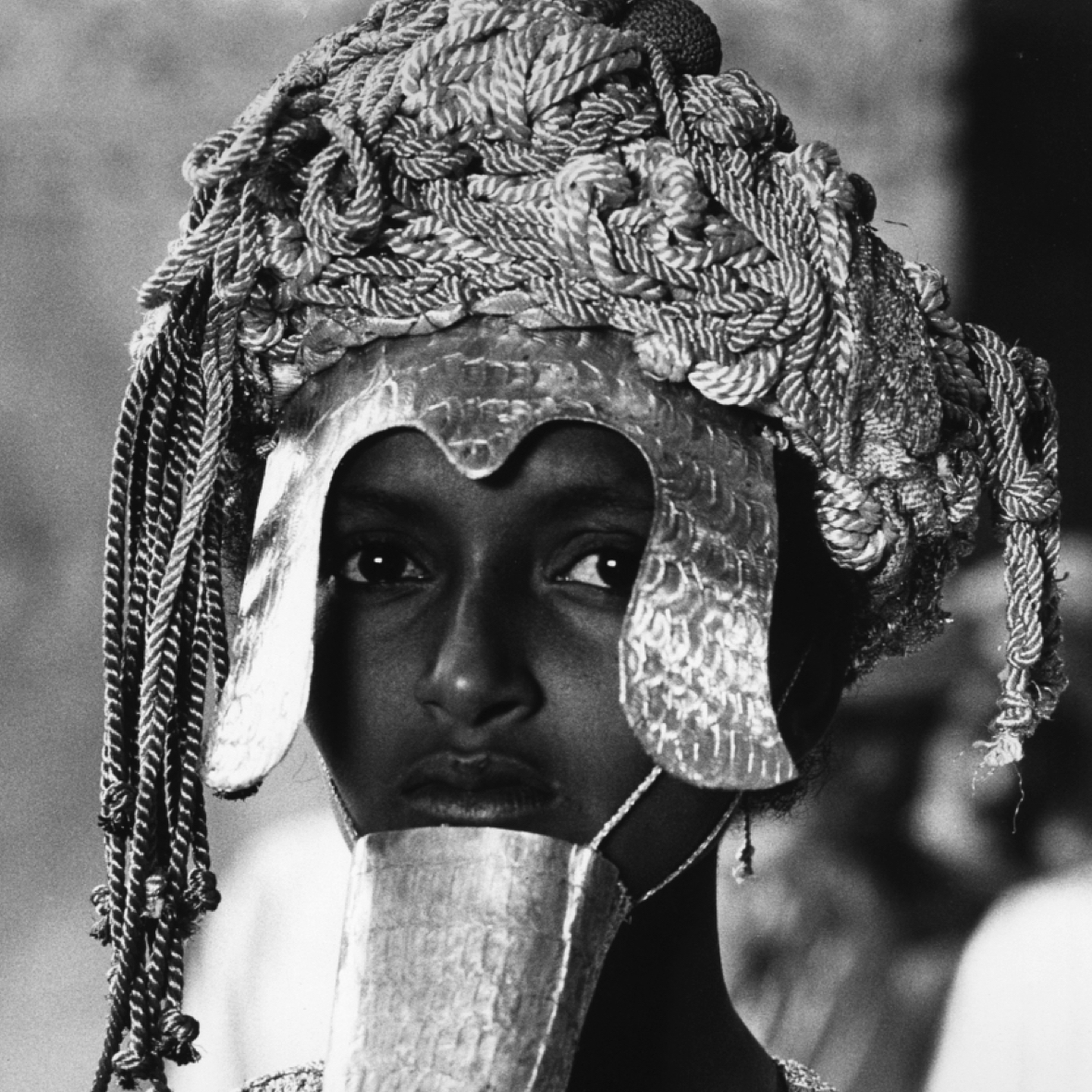The Thousand and One Nights and the postmodernism of Pier Paolo Pasolini
Thus I rediscovered what writers have always known (and have told us again and again): books always speak of other books, and every story tells a story that has already been told.
― Umberto Eco, postscript to The Name of the Rose
In 1967, John Barth published the controversial and well-known essay The Literature of Exhaustion, which proposed that the conventional modes of literary representation had been consumed, and their possibilities expended through depletion. The implications of this ‘exhaustion’, which extend to all forms of artistic production, seem to take on a heightened relevance today. At a time when notions of authenticity in the face of relativity, plurality, and hybridity seem to be dominating roundtable debates, it may be beneficial to return to a discussion of the literary masterpiece, The Thousand and One Nights, and, more specifically, Il Fiore Delle Mille e Una Note, Pier Paolo Pasolini’s controversial 1974 cinematic adaptation of it. If what immediately comes to mind is how repetitive or unoriginal the film may seem, then it can be argued to well serve as the basis in exploring the fittingly jejune question, has all art already been made?
Alf Layla wa Layla – the Arabic title of the collection of stories known as The Thousand and One Nights, and, perhaps erroneously, The Arabian Nights – can be argued to be the epitome of globalisation, at least in the Giddensian sense that interprets the intensification of social relations in such a way where local happenings both shape, and are shaped by distant localities. Ever since Antoine Galland discovered and rendered the Nights into French in 1704, the tales contained in it have fascinated the world, having been translated first into English and subsequently into almost all major languages. Subject to countless appropriations as well as claims of ‘ownership’ by various cultures, the Nights is what scholar When-Chin Ouyan has eloquently termed ‘a statement on the entanglement that bespeaks the complex collaborative effort that went into this multicultural product’. In this regard, a fruitful discussion on what one may potentially take from Pasolini’s film involves less of a quest for the ‘idol of origins’ – as reflected in the obsession of tracing the collection’s genealogy to Persian, Indian, Greek, and Arabo-Islamic sources – and more an acknowledgment of its role within a multifaceted present reality.
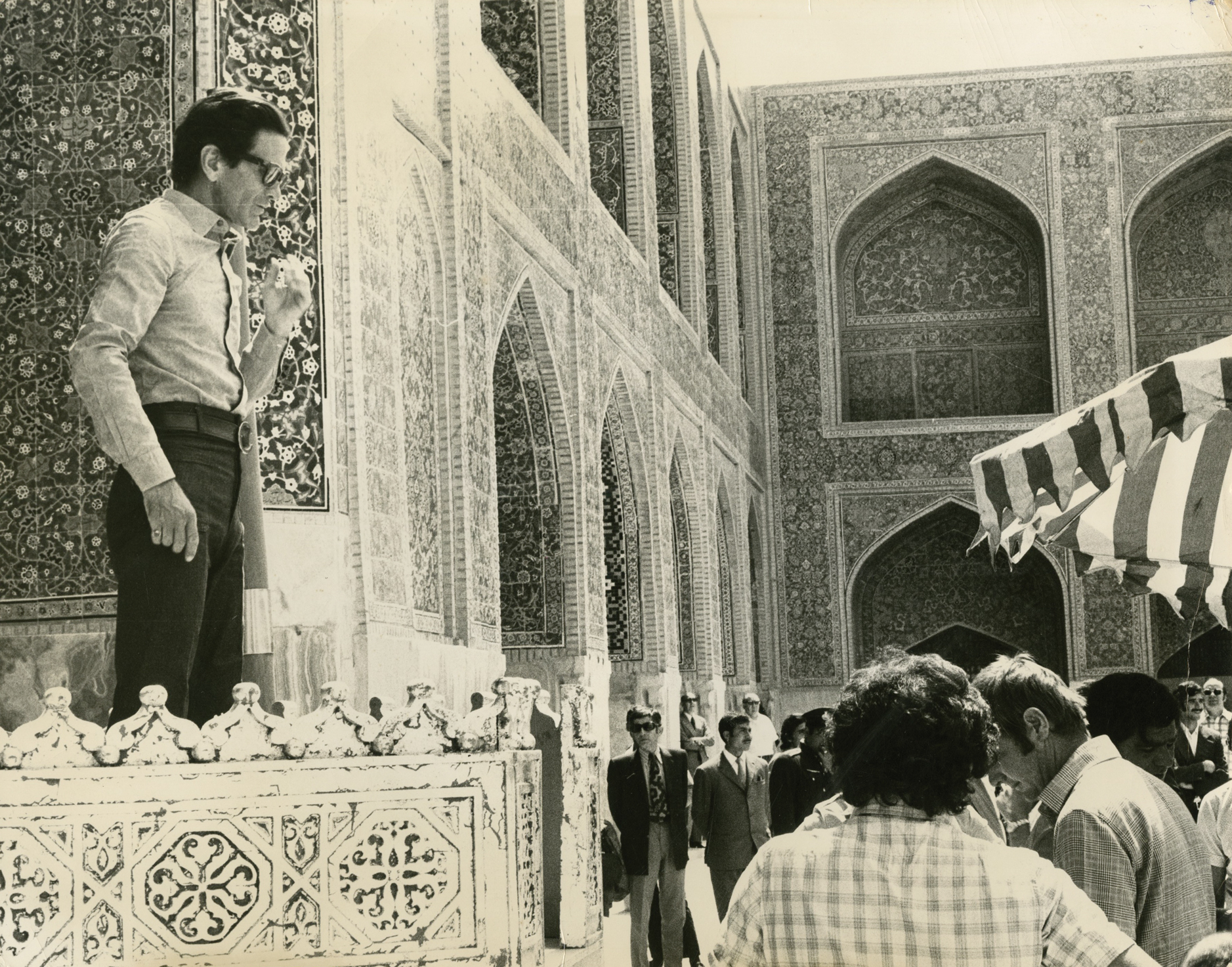
Pier Paolo Pasolini on the set of Il Fiore Delle Mille e Una Note in Esfahan, Iran
Pasolini’s Il Fiore Delle Mille e Una Note (The Flower of the Thousand and One Nights, 1974), the final installment in the Trilogy of Life – also consisting of Il Decameron (The Decameron, 1971), and I Racconti di Canterbury (The Canterbury Tales, 1972) – can help shed light on the aforementioned notion of artistic exhaustion. This is not simply due to Il Fiore’s faithful adoption of the tale-within-a-tale narrative technique – a framework that continues to hold a universally magnetic appeal – but rather because of Pasolini’s ability to present the narrative as self-conscious of its own ‘mode’. As one can witness, by pushing the boundaries of the narrative technique employed, Il Fiore comes to represent what Ihab Hassan described in his 1973 paper The New Gnosticism: Speculations on Aspects of the Postmodern Mind as the ‘postmodern episteme’, wherein the mind becomes its own reality and consciousness becomes all. Eventually evolving into an acute self-consciousness, the themes that descend from this, as integral to the postmodern canon, represent an endless suspension between life and art, reality and imagination.
Perhaps the most important manifestation of [Il Fiore’s postmodern logic] comes from Pasolini’s omission of the original frame story … it becomes impossible to determine the containing tale from the contained – and, ultimately, to distinguish fiction from its not-so-Other, reality
In Pasolini’s Il Fiore, a peculiar symbolism is given to the additional night in the original frame story; if a thousand nights is representative of the tale-within-a-tale narrative, then the appended night can be said to serve as its own self-consciousness. For instance, the film commences with the voyeuristic scene of a sheikh and sheikha looking down and admiring Nur al Din and Zumurrud, who are at the same time admiring and fondling one another. Here, audiences are reminded of their own voyeurism as spectators; from the get-go, they are explicitly made aware of their relationship to the narrative. Similarly, characters in one story may influence those in another, such as happens in the destinies of Aziz and Dunya. Time and time again, Pasolini, via artistic manipulation, makes his characters as well as his audience – who by default become characters within the tale – self-aware of the tale-within-a-tale narrative technique.
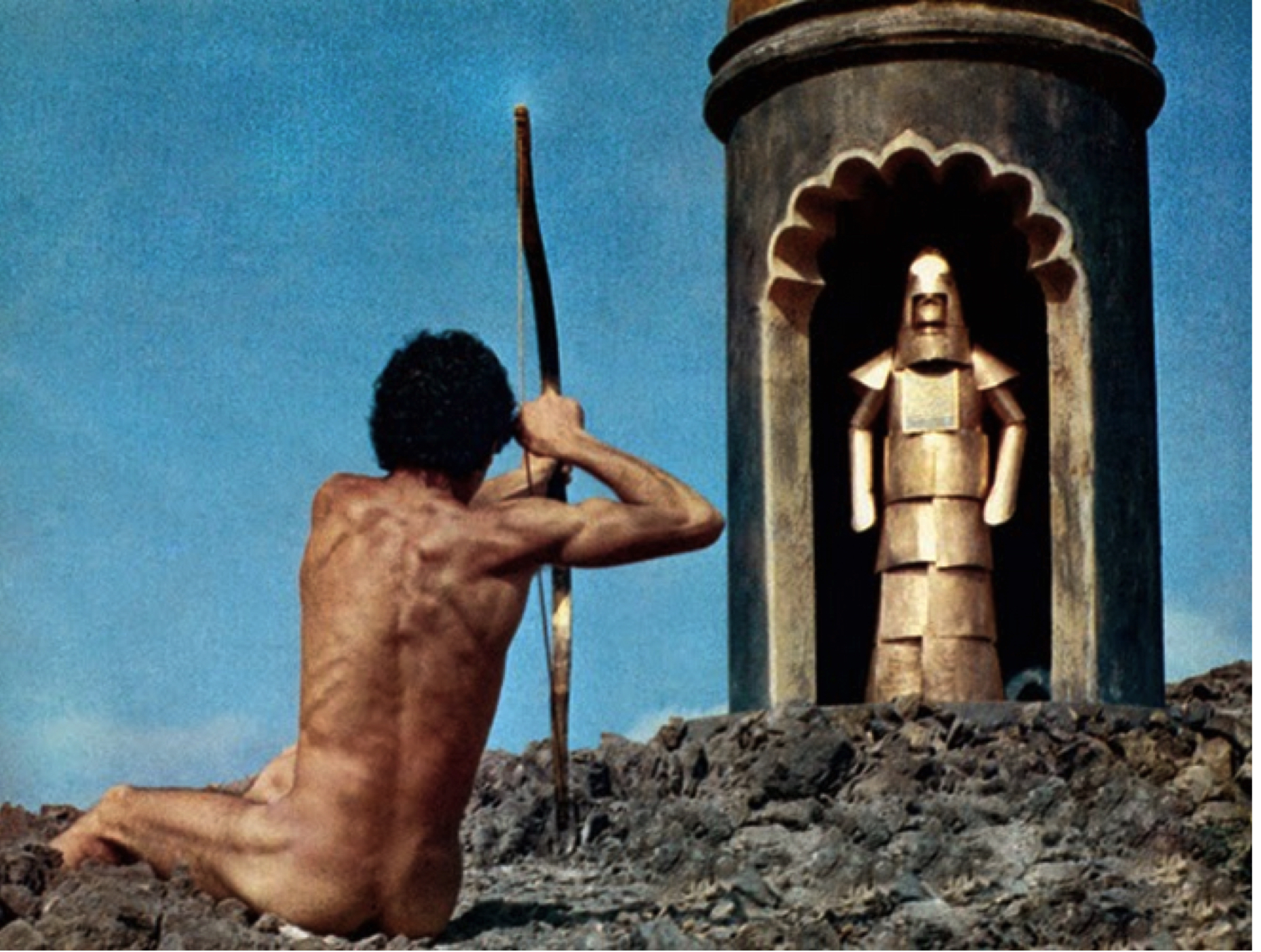
The ‘idol of origins’?
In this regard, the director falls in line with the ‘spirit of the age’ in which he lived: a period when postmodernity was only beginning to articulate itself as a distinctive para-discourse to modernism. One of Jorge Luis Borges’ most recurring literary allusions was to the 602nd night of a certain edition (fictional or not) of the Nights, when, due to a copyist’s error, Scheherazade begins to tell King Shahryar the story from the beginning, once again. Thankfully, due to the king’s interruption, the error is corrected, and the story continues. Borges, as Barth explains, was interested in the 602nd night because it is an instance of the tale-within-a-tale structured turned back upon itself. The point is that this self-consciousness found in Borges, but for the present purpose in Pasolini’s adaptation of the tale, introduces the ironic element through the ‘art of interruption’. In Empirismo Eretico (Heretic Empiricism, 1972), he elaborates that it is through interruption, or, suspension, that the meaning of things and individuals are opened to different articulations. Unlike modernism, its post-relative does not lament the idea of fragmentation, or incoherence, but rather rejoices in it. As Pasolini noted in A Future Life,
Sometimes I ask myself (without the least anxiety) if by chance this trilogy [to] which I am giving myself body and soul is not a form of political disengagement and … indifference. But I know intimately that my recent works are political precisely because they do not want to be so … The interruption of meaning is not only more honest, it is more universal than the meaning itself.
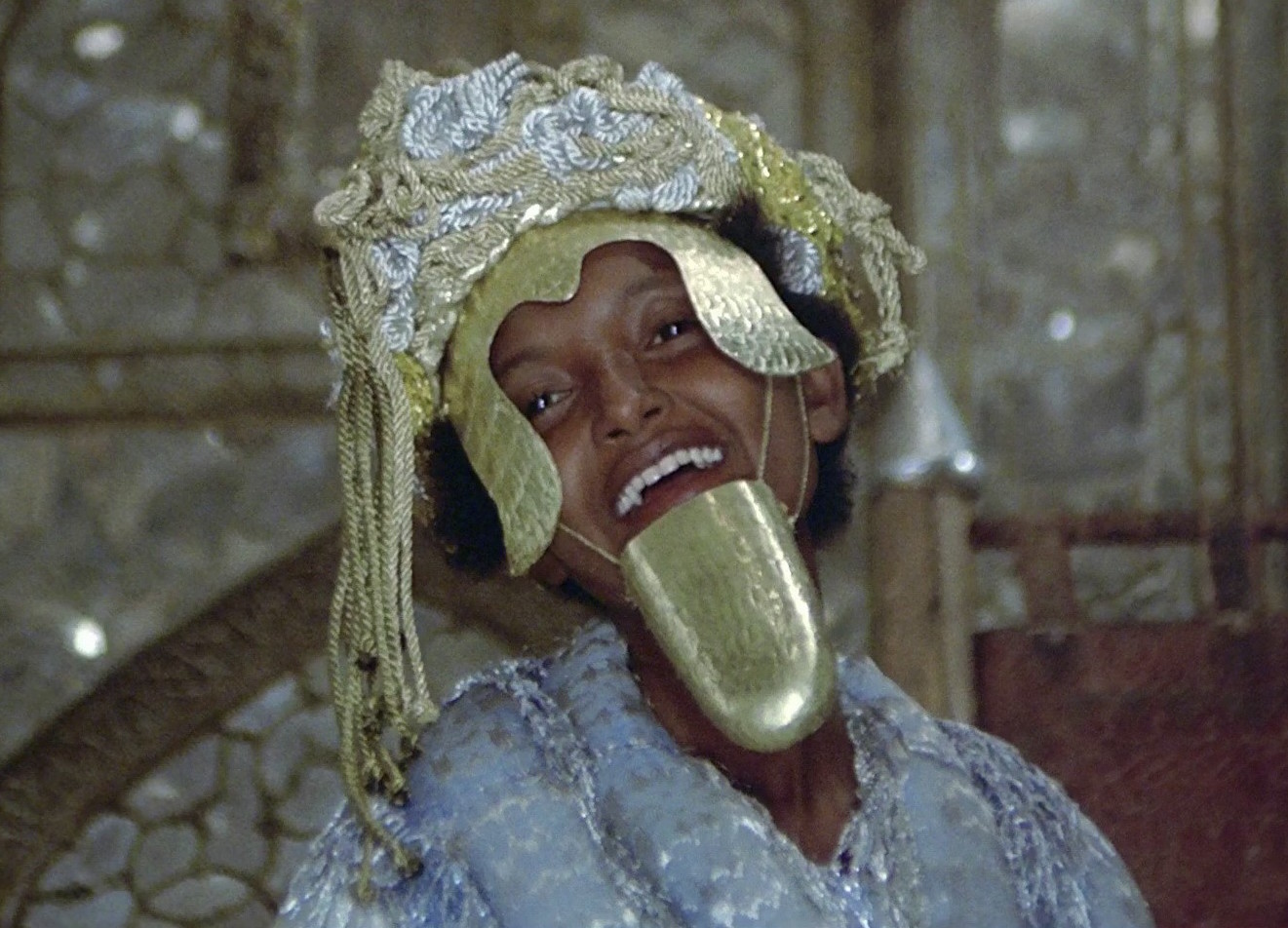
Zumurrud having a laugh
Such a statement suggests that Il Fiore, through the interruption of meaning, is an attempt to bring Pasolini’s spectators to a politico-cultural alertness. Identifying himself with those on the margins of society, he sought stories that explored the non-normative — those of characters such as queers, prostitutes, immigrants, and peasants. Although the entire Trilogy of Life has been argued to be a celebration of pre-capitalist/non-industrialised societies, Il Fiore, in particular, with its emphasis on the ‘non-West’, provided Pasolini with a potential point of resistance to the cultural hegemony of the economic centre. ‘My polemic was against the culture of the dominant Eurocentric class’, Pasolini explicitly stated. He was well aware of the fabrication of Orientalist representations within the popular imaginary – that is, of the ‘East’ as a society still on the borders of consumer culture and not yet homologated by the forces of neo-capitalism.
Beginning from his earliest films, such as Accattone (Beggar, 1961) and Mamma Roma (Mama Rome, 1962), Pasolini’s productions have always been a site where his socio-political critiques are represented on an aesthetic level. Reflective of the Nights’ own multicultural historiographical development, Pasolini draws on both standard cinematic and subaltern visual languages, often giving the film a bizarre fluidity that comes across as ‘unprofessional’ and/or kitsch. As a case in point, Pasolini drew his imagery predominantly from the art and architecture of the East (Iran, Yemen, Eritrea, and Nepal). While this may be less worth noting in terms of actors, costumes, and décor, it remains highly symbolic with regard to the spatial compositions, inspired by the conventions of Persian miniature paintings. Drawing on their intriguing perspective — which often sees the overlay of elements on a two-dimensional plane — Pasolini adopted such techniques in film. When juxtaposed with the film’s normative cinematographic sections, what amounts is a striking unnaturalness that demands viewers’ attention.
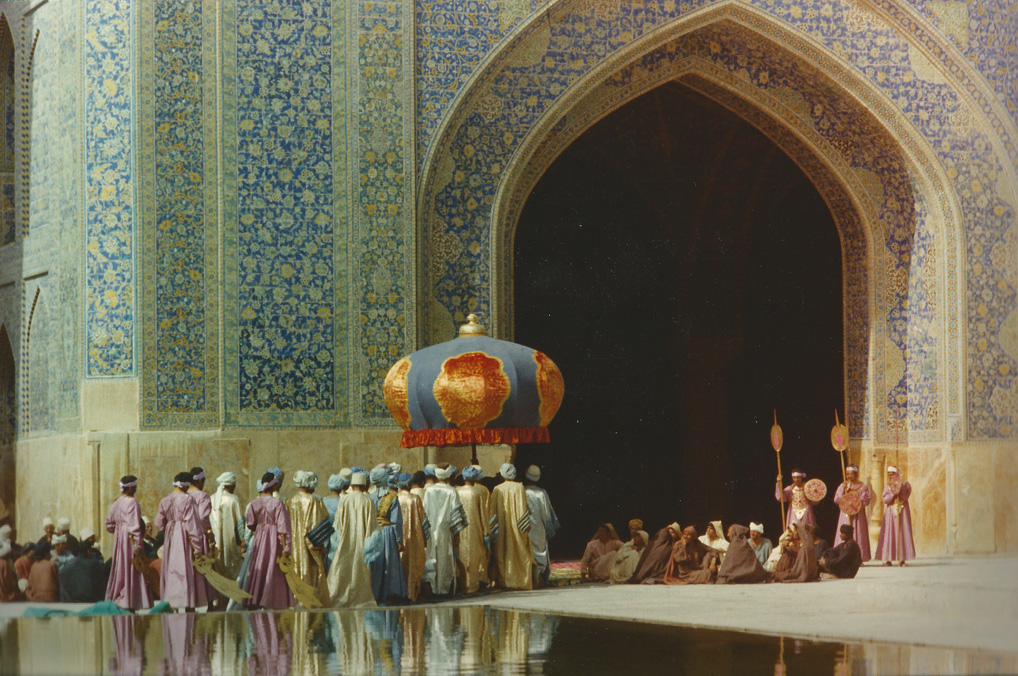
A scene in Esfahan from Il Fiore Delle Mille e Una Note
All the above elements, working in concert, create the film’s postmodern logic. Perhaps the most important manifestation of this comes from Pasolini’s omission of the original frame story featuring Scheherezade and Shahryar. Though this ‘unlimited narration’, as Naomi Green calls it, it is impossible to determine the outer limit to the tale-within-a-tale structure; in different terms, by pushing the boundaries of the traditional narrative technique, it becomes impossible to determine the containing tale from the contained – and, ultimately, to distinguish fiction from its not-so-Other, reality. As Borges elaborated, one is often reminded of the fiction of their own life, in which they are both the author and the protagonist, and in which their reading of the narrative is itself a tale-within-a-tale.
For artists today, the myth of originality is both a source of stimulus as well as apprehension. Are my ideas fresh? they ask; is what I’m producing innovative? Do I have something fundamentally worthy to contribute? Like the endurance of the Nights through time and space, questions of authenticity are by no means novel; yet, like Pasolini’s Il Fiore, through its embodiment of postmodernism, they may provide some insight to such queries, if only in their re-articulation. Whether one can claim originality remains dubious if one keeps history – an inescapable domain where all are, in a sense, editors and translators of pre-existing archetypes – in mind. What Pasolini offers is perhaps only one response to the question of exhaustion: the ability to turn the conundrum into a paradox and consciously recreate it.
